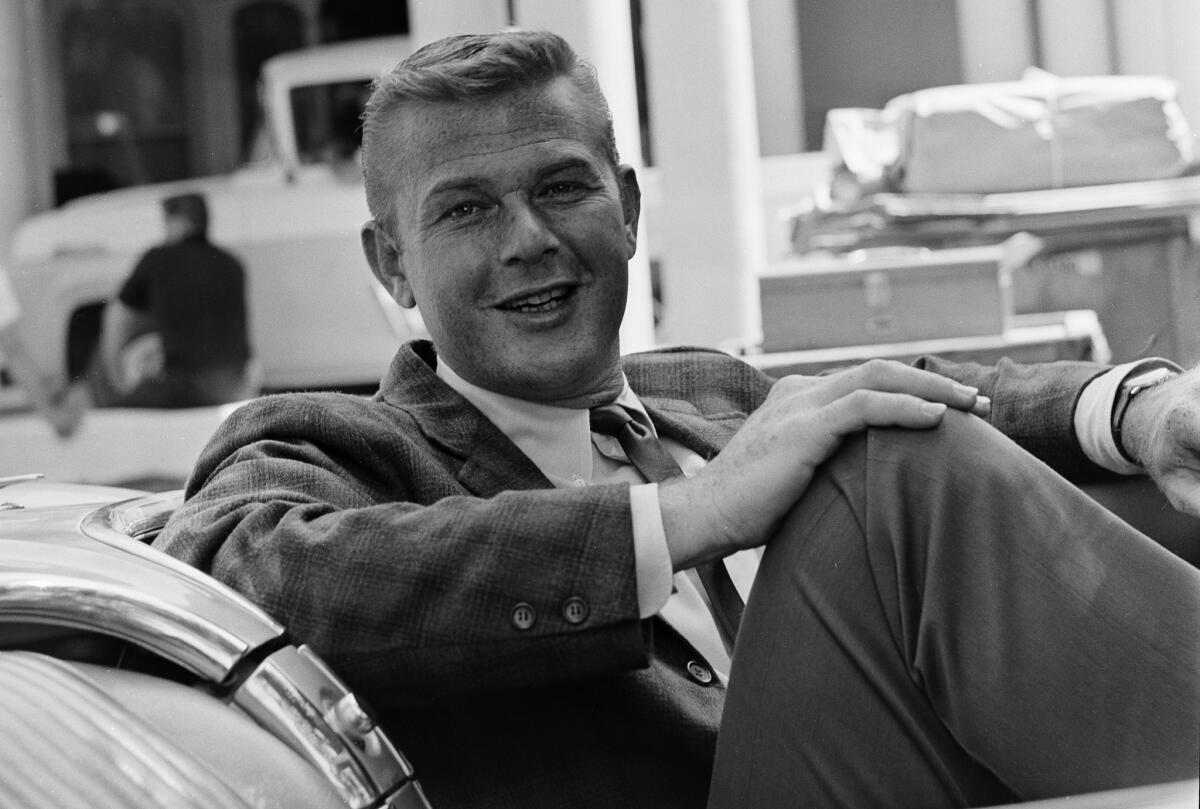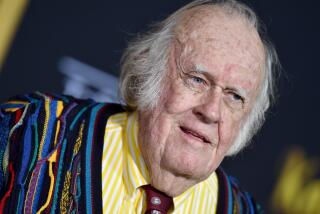Appreciation: Martin Milner’s less-is-more style drove ‘Route 66,’ ‘Adam-12’

Martin Milner rehearses a scene for “Route 66.”
Martin Milner, who died Monday in Los Angeles at the age of 82, acted in many movies and many episodes of many television shows in a career that lasted half a century. But he’ll be best remembered for two television series, “Route 66,” which ran on CBS from 1960 to 1964, and Jack Webb’s “Adam-12,” on NBC from 1968 to 1975 — shows born at opposite ends of a decade split down the middle culturally, socially and politically, and yet similar in many respects.
Both star two men and an automobile — a Chevrolet Corvette in the first instance, and an LAPD patrol car in the second; many scenes are played on wheels. Both were episodic, semi-anthologies, in which the main, recurring characters were also somewhat beside the point. Both were shot almost entirely on location, “Route 66” in 25 states and “Adam-12” all over Los Angeles.
SIGN UP for the free Indie Focus movies newsletter >>
And although they come at it from opposite directions, each is doggedly engaged with real-world issues, with ideas of order and disorder, freedom and responsibility. The Kennedy-era “Route 66,” whose working title was “The Searchers,” was inspired by Jack Kerouac’s recently published “On the Road,” whereas “Adam-12,” which rode in with the law-and-order Nixon administration, descended from Webb’s “Dragnet.”
The first might be called a story of innocence, the second of experience, to get a little fancy about it. What might be called Huck Finn-handsome, Milner is a mannish boy in the earlier show, a boyish man in the latter.
In “Route 66,” Milner’s Tod Stiles and his successive dark-haired partners — played by George Maharis and Glenn Corbett in turn — cruise the country, living life; it is an early-’60s network television impression of an existential quest. Their travels bring them up against all sorts of people, but significantly the show spends time among the laboring class in a way nearly unthinkable in television today. Though the stories can run to melodrama, “Route 66” is aesthetically of a piece with New Wave and kitchen-sink cinema, its low-overhead, off-the-street, art-house contemporaries.
“Adam 12” does its work within Webb’s famous, just-the-facts house style. (Kent McCord, as Jim Reed, is the dark-haired partner there, to Milner’s older, wiser Pete Malloy; as in “Route 66,” Milner drove the car.) Although it has the flat, overlit look of most television of its time, and a certain stylistic stiffness, it too means to represent a from-the-files, only-the-names-changed actuality. If the men of “Route 66” illustrate Bob Dylan’s soon-to-be-recorded observation that to live outside the law you must be honest, the point of “Adam-12” is that living inside the law makes you honest by definition — it’s the rules that make you free.
Although there is action in both series — fistfights, that old exercise of manliness, are a regular feature of “Route 66,” while “Adam 12” requires its policemen sometimes to knock down a door, draw a gun or chase a perp — the characters are observers of the action as much as or more than they are participants. They might deliver a character to judgment, but they don’t deliver the judgment.
They help the story along, often crucially, but it isn’t about them. They ask questions and make comments, and sometimes a joke, but mostly they listen while others talk.
And so for the viewer, much of watching Milner consists in watching him watch; indeed, much of what we know about his characters — in both series, the background is sketchy — is expressed in these moments, in how he reacts to what the world is showing him, and how those reactions evolve. It’s often said that good acting is good listening, and Milner was a minor master of the art of attention. He draws you in most when he appears to do the least; he was powerful because he was present.
Twitter: @LATimesTVLloyd
More to Read
The complete guide to home viewing
Get Screen Gab for everything about the TV shows and streaming movies everyone’s talking about.
You may occasionally receive promotional content from the Los Angeles Times.







